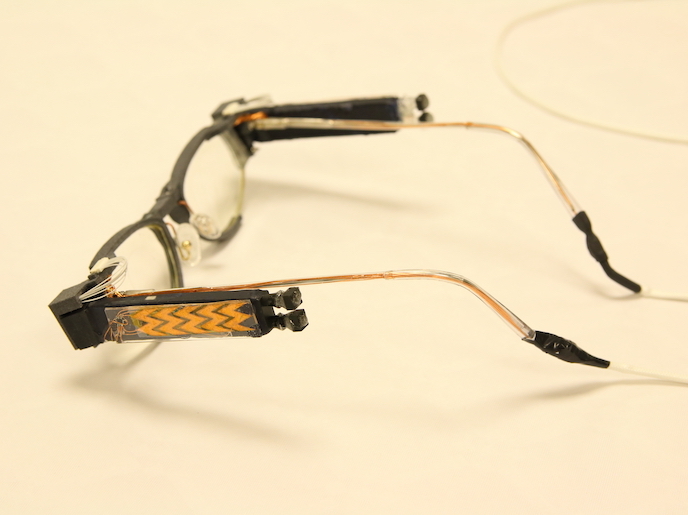Seeing eye to eye: head cams help tackle intergenerational mental health transmission
Despite research indicating a link between parental and offspring mental health, little progress has been made to either explain it or identify interventions to break the cycle. Rebecca Pearson, project coordinator of the MHINT project, which was funded by the European Research Council(opens in new window) says that children of mentally ill mothers(opens in new window) are still substantially more likely to have mental health problems themselves(opens in new window). Spawning over 40 published articles, MHINT used a range of novel technologies and analytical techniques to generate more detailed, natural and genetically sensitive evidence than had been achieved before.
Surveying mother-child interactions
MHINT’s wearable head camera system – co-designed(opens in new window) with parents, researchers and data scientists – alongside a micro behaviour coding scheme(opens in new window), captured behaviours exhibited in 300 mother-child dyads in the United Kingdom. Both parent and child wore the cameras while at home(opens in new window). The footage was micro-coded by researchers. Integrating the resulting data into existing studies, including a 90s study of over 220 parents and babies(opens in new window), preliminary analysis(opens in new window) threw up interesting insights. For example, there was evidence that for each increased ‘unit’(opens in new window) of depressed mood, the caregiver (usually the parent) spent less time showing empathic facial responses to a child, like ‘mock surprise’. “These emotional mirroring responses seem to be less common when parents are struggling with low mood and anxiety, making it harder to absorb the emotions of others,” explains Pearson. Additionally, for each unit increase in depressed moods, the primary caregiver spent 37 % more time looking at secondary caregivers (usually the father or other adults). Furthermore, children of parents with higher depressive symptoms spent 28 % more time looking at another child than those of parents with low symptoms. “This likely reflects the fact that depressed people often need social support, meaning that mothers commonly suffering from lower mood postnatally should seek out as much support as possible!” notes Pearson.
The impact of genetics on mother-child mental health
The team also investigated how nature (genetics) may influence mother-child mental health associations. Taking a data set representing over 10 000 people comprising seven international cohorts with intergenerational genetic and phenotypic data, for the first time genetic mental health risks were modelled in children(opens in new window), mothers and fathers. A comparison of similarity between genetic scores on certain traits, such as neuroticism, was also undertaken. Evidence was found of direct and indirect genetic links between parental neuroticism and emotional problems in children across their development. “Parent-child dyads with greater genetic emotional similarity, indicated by similar genetic scores for neuroticism, reported greater enjoyment in the relationship, especially for boys,” adds Pearson.
Detecting subtle emotional cues during parent-teen interactions
To establish whether maternal parenting support could benefit child mental health, a meta-analysis of over 50 intervention studies was undertaken. Interventions focusing on the relationship between parent and child – alongside early parenting interventions – showed most promise for preventing children and adolescents internalising problems(opens in new window). “Rather than look at parenting in isolation, a key takeaway is to understand and strengthen the dynamic and context-dependent connections between parent and child,” notes Pearson. Recently the team has integrated its head camera methodology into a study capturing parents-teens interactions(opens in new window). AI-driven emotion reader software(opens in new window) has also been applied to the footage to detect subtler emotional cues: “This could provide previously unimaginable early intervention opportunities, especially given that most parents try to ‘mask’ their distress,” according to Pearson. To promote the project and garner feedback, creative community events have been held across the United Kingdom, including a mobile van tour(opens in new window) of harder-to-reach communities, alongside an immersive theatre performance.







